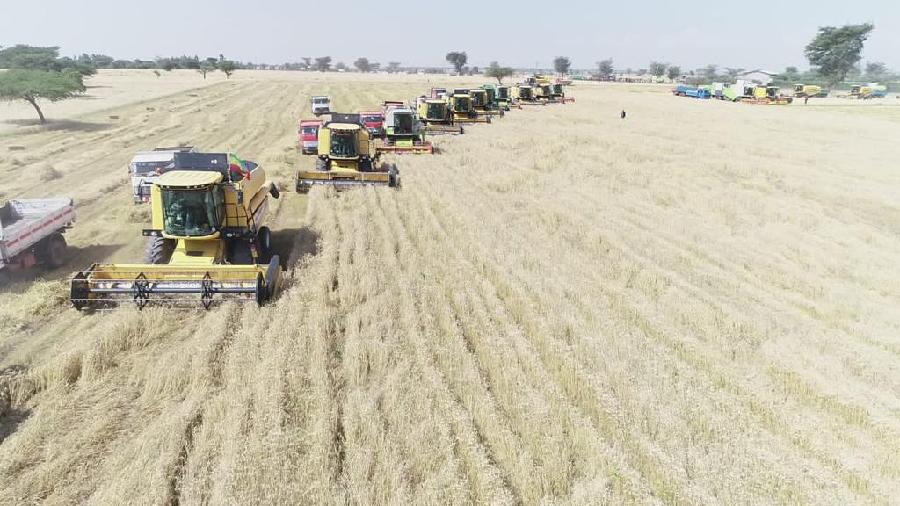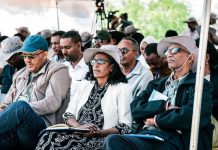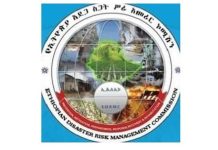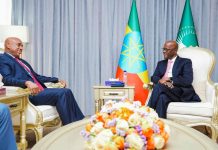Africa-Press – Ethiopia. BY SOLOMON DIBABA
Members of the House of People’s Representatives (HPR) during its 4th regular session put questions to Prime Minister Abiy Ahmed, among others, on agriculture sector.
The premier underscored on the need to expedite modernization and diversification of agricultural development in Ethiopia as a decisive tool for economic transformation. Reflecting back on the state of the Ethiopian economy in the previous fiscal year, quoting the World Bank, Abiy stated that the economy was resilient amid challenges. Despite the advents of COVID-19 pandemic that plagued the country, the recurrent drought, the global effects of Russia-Ukrainian War and the devastating internal conflict, the country has managed to register a resilient economic development with 6.4% growth of GDP at the end of 2014 Ethiopian fiscal year. The per capita income has also reached 1,212 USD. He noted that the agriculture sector has exhibited 6.1% growth, boosting the level of the GDP. “Had it not been for the war, what result could have been registered?” the Prime Minister wondered.
Ethiopia remained first in East Africa and third in Sub-Saharan Africa, becoming among the largest economies during the year. Focusing on the potentials for export oriented agricultural development and promotion of food security, on top of the bumper wheat harvest expected in the current crop season, Abiy noted that for the first time in the country’s history, rice production in Amhara region with the productivity potential of 80 quintals per hectare is expected to fully substitute export of rice from overseas. The country has also huge potentials in the production of maize, fruits and vegetables.
Given a huge relief and reconstruction program ahead in the aftermath of the peace agreement between the Government of Ethiopia and TPLF, donor countries and international organizations are expected to support the efforts of the government and people of Ethiopia. Ethiopia will certainly embark on enhanced agricultural productivity to feed the needy population in the northern part of the country and elsewhere. The increased harvest in the current fiscal year will help the nation to ease the burden of reaching out to the food deficient population in the country.
In terms of the modernization of agriculture, the Prime Minister stressed the need to expedite mechanized agriculture by substituting farmers’ dependence on oxen with tractors and combine harvesters. Ensuring food security and import substitution, as well as exporting agricultural commodities are important to address the chronic food insecurity induced by drought and prevalence of micro-nutrient malnutrition among children and the elderly.
It is also important to link food security with quality production, distribution and storage facilities. Nonetheless, the skyrocketing of food prices and the resultant increase in hyperinflation can only be addressed through various mechanisms. Ensuring food security constitutes, among others, timely production and distribution as well as the reduction of post-harvest loss by employing traditional modern methods of food preservation. DAs (development agents) in different regions of the country need to teach farmers on how to preserve their food in traditional ways like smoking, drying and grinding as well as using different modern methods.
What should then be done given rising prices of basic food commodities,? Food security could be ensured by enhancing urban agriculture by promoting urban poor to engage in backyard horticulture development. On top of basic crops such as teff, maize, wheat and the likes, it is also essential to diversify the production of root crops in rural areas like inset, cassava, godare, potatoes and sweet potatoes which can be easily conserved and stored.
Extensive use of irrigation schemes need to be scaled up to produce more diversified crops like teff, rice and fruit crops. This is of great importance not only to ensure food security but also for balanced diets.
As the Prime Minister has indicated, agriculture will still remain as the pace setter for the economic development of the country. The peace agreement signed between the government and TPLF will certainly create a better environment for foreign and local investors to embark agriculture and manufacturing sectors. Farmers in war torn parts of northern Ethiopia will also be able to engage in farming, without fear and undesirable displacement.
Integrating crop production activities with Green Legacy Initiative is instrumental not only for the production of more food but also for diversification of the agriculture sector thereby sustaining the balance between various ecosystems across the country.
Scaling up the wheat cluster farming to other agricultural crop production like maize, teff and legume crops and spices is important. This will create an excellent opportunity for agricultural modernization and increase in productivity per hectare.
Despite the huge potentials in the lakes and other water bodies, Ethiopia has not so far utilized its potential in fish production. This could have developed to the level of agro-industry and diversification for exports. There is indeed more to be done in this direction as sector could be used as a means of food subsistence and creating employment in rural Ethiopia.
Statistics clearly indicates that Ethiopia’s demographic structure is dominated by the young generation which accounts for more than 70% of the population. The agriculture sector could be manned by young persons who can work hard to bring changes in the economic development of the country and even contribute a lot in reducing the alarming unemployment rate in rural town and urban centers.
Providing adequate and well-tailored and targeted trainings for farmers across the country eking their life on agriculture in various ecosystems could pay off both in the short run and over time. It is therefore important to further strengthen crop production in pastoral communities to ensure food security as well as diversify agricultural practices on top of livestock production.
As stated on several occasions, the future is bright for Ethiopia to set an example for Africa in agricultural development and modernization. With 12 river basins at hand and vast arable land and young population, there is no reason to doubt that Ethiopia could be self-sufficient in food and export the remaining to the countries near and afar.
For More News And Analysis About Ethiopia Follow Africa-Press






